


Have you ever been frustrated when your trusty Dyson vacuum cleaner suddenly stops sucking? It can be a real inconvenience, especially when you’re in the middle of cleaning your home. Before you rush out to buy a new vacuum, it’s worth taking a closer look at the possible causes and solutions for your Dyson’s lack of suction.
There are several common reasons why your Dyson may not be sucking as well as it used to. One possibility is that the filters are dirty or clogged, preventing the airflow from passing through effectively. Another potential issue could be a blockage in the hose or brush bar, obstructing the path of the dirt and debris. Alternatively, the problem could lie with the motor or brush roll, which may need to be replaced or repaired.
To resolve these issues, there are a few steps you can take. First, check and clean the filters in your Dyson vacuum. These filters are designed to capture dust and dirt particles and need regular cleaning to maintain optimal performance. If the filters are dirty, simply remove them from the vacuum and wash them with water. Allow them to dry completely before reinstalling them.
“Cleaning the filters regularly is essential for maintaining suction in your Dyson,” advises Lisa Johnson, a Dyson expert. “By keeping the filters clean, you can prevent dust and debris from clogging the airflow and ensure your vacuum continues to deliver powerful suction.”
If you suspect a blockage in the hose or brush bar, carefully remove the blockage and clear any debris. You can use a long, flexible brush or wire to dislodge any clogs and remove them. Additionally, regularly inspect the brush roll for any tangled hair or string that may be interfering with its operation.
If, after trying these solutions, your Dyson vacuum is still not sucking properly, it may be time to consult a professional. Contact the Dyson customer service or take your vacuum to an authorized repair center, where expert technicians can diagnose and fix the problem.
Common Reasons for Dyson Not Sucking
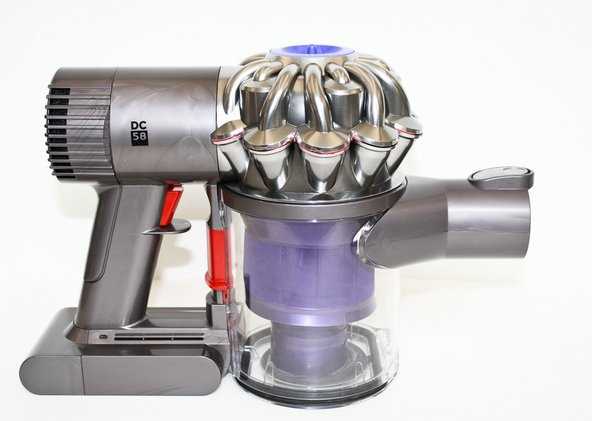
Clogged Filters

One of the most common reasons why a Dyson vacuum may not be sucking properly is due to clogged filters. Over time, dust and debris can accumulate in the filters, causing them to become blocked. This hinders the airflow and reduces the suction power of the vacuum. To fix this issue, you should regularly clean or replace the filters according to the manufacturer’s instructions.
Clogged Hose or Brush Bar
Another common cause of a Dyson vacuum not sucking is a clogged hose or brush bar. Hair, string, or other debris can get tangled in the brush bar or become stuck in the hose, causing a blockage. This prevents the vacuum from effectively picking up dirt and debris. To resolve this issue, you should carefully inspect the hose and brush bar for any blockages and remove them if necessary.
Full Dustbin
If your Dyson vacuum has a full dustbin, it may not be able to suck up any more dirt and debris. When the dustbin reaches its maximum capacity, the suction power can be greatly reduced. To solve this problem, simply empty the dustbin and dispose of the collected dirt and debris properly. Make sure to regularly empty the dustbin to prevent future clogging issues.
Worn Brushes or Belts
Over time, the brushes or belts in a Dyson vacuum can wear out, leading to a diminished suction power. If the brushes are worn or the belts are loose or broken, the vacuum may not be able to effectively pick up dirt and debris. In this case, you should replace the brushes or belts to restore the suction power of the vacuum.
Motor or Power Issues
In some cases, a Dyson vacuum may not be sucking properly due to motor or power issues. If the motor is damaged or the power supply is not functioning correctly, the vacuum may not provide sufficient suction. If you suspect motor or power issues, it is advisable to contact a professional technician or the Dyson customer support for further assistance.
Incorrect Usage
Lastly, a Dyson vacuum may not be sucking properly if it is not being used correctly. It is important to follow the user manual and ensure that you are using the vacuum in the appropriate manner. Improper usage can lead to reduced suction power and less effective cleaning. Make sure to read and understand the instructions provided by Dyson to optimize the performance of your vacuum.
Clogged Filters and Brushes
If your Dyson vacuum cleaner is not sucking properly, one possible cause could be clogged filters and brushes. Over time, dust, debris, and hair can accumulate in the filters and brushes, obstructing the airflow and reducing the suction power of the vacuum cleaner.
To resolve this issue, follow these steps:
- Clean or replace the filters:
- Check the user manual to identify the location of the filters in your Dyson vacuum cleaner.
- Remove the filters from the vacuum cleaner.
- Inspect the filters for any visible dirt, dust, or debris.
- If the filters are washable, rinse them thoroughly with cold water until all the dirt is removed. Allow them to air dry completely before reinstalling.
- If the filters are not washable, they may need to be replaced. Consult the user manual or contact Dyson customer support for replacement filters.
- Clean the brushroll:
- Turn off and unplug the vacuum cleaner.
- Locate the brushroll on the bottom of the vacuum cleaner.
- Using a pair of scissors or a knife, carefully cut away any hair or fibers that may be wrapped around the brushroll.
- Remove any debris or obstructions from the brushroll, taking care not to damage the bristles.
- Once the brushroll is clean, reinsert it back into the vacuum cleaner.
Regularly cleaning or replacing the filters and brushroll will not only improve the suction power of your Dyson vacuum cleaner but also help maintain its performance and longevity. It is recommended to clean the filters at least once a month and check the brushroll for any potential clogs or blockages to ensure optimal performance.
Full Dust Canister
If your Dyson vacuum cleaner is not sucking, one of the possible causes could be a full dust canister. When the dust canister is full, it can restrict airflow and cause a decrease in suction power.
To check if the dust canister is full, follow these steps:
- Turn off and unplug the vacuum cleaner.
- Locate the dust canister on your Dyson vacuum cleaner. It is usually a transparent container located near the vacuum head.
- Unlock the dust canister by pressing the release button or lever.
- Remove the dust canister from the vacuum cleaner.
- Inspect the dust canister and check if it is full. If it is, you will see a build-up of dirt and debris inside.
If the dust canister is full, you can solve the problem by emptying it. Here’s how:
- Take the dust canister to a trash bin or bag.
- Press the release button or lever to open the bottom of the dust canister.
- Empty the contents of the dust canister into the trash bin or bag.
- Close the bottom of the dust canister securely.
- Reattach the dust canister to the vacuum cleaner.
Once you have emptied the dust canister, you should notice an improvement in suction power. It is recommended to empty the dust canister regularly to prevent it from getting too full and affecting the performance of your Dyson vacuum cleaner.
If you have emptied the dust canister and your Dyson vacuum cleaner is still not sucking as it should, there may be other causes for the issue. It is advisable to check for other possible causes, such as clogged filters or blocked hoses, and take appropriate action to resolve the problem.
Blocked or Damaged Hose
If your Dyson vacuum cleaner is not sucking as it should, one possible cause could be a blocked or damaged hose. The hose is an essential component of the vacuum cleaner that helps to transport the dirt and debris from the floor into the dustbin. If the hose is blocked or damaged, it can prevent proper suction and affect the performance of the vacuum cleaner.
To check if the hose is blocked, first, turn off the vacuum cleaner and unplug it from the power source. Next, remove the hose from the vacuum cleaner by disconnecting it from both ends. Once the hose is detached, inspect it for any visible blockages. You can use a flashlight to look into the hose and check for any clogs or debris. If you notice any blockages, use a long, flexible object such as a wire or a broom handle to gently push through the hose and dislodge the obstruction.
If the hose appears to be damaged, such as having cracks, holes, or tears, it will need to be replaced. Contact the manufacturer or an authorized service center to obtain a replacement hose for your specific model of Dyson vacuum cleaner.
It is also a good idea to regularly clean the hose to prevent any build-up of dust, dirt, or debris that could cause blockages. You can use a long, thin brush or a pipe cleaner to clean the inside of the hose. Simply insert the brush or pipe cleaner into one end of the hose and gently move it back and forth to dislodge any dirt or debris.
By keeping your Dyson vacuum cleaner’s hose clean and free from blockages or damages, you can ensure optimal suction and maintain the performance of your vacuum cleaner.
Solutions to Improve Suction Power
Clean or Replace Filters
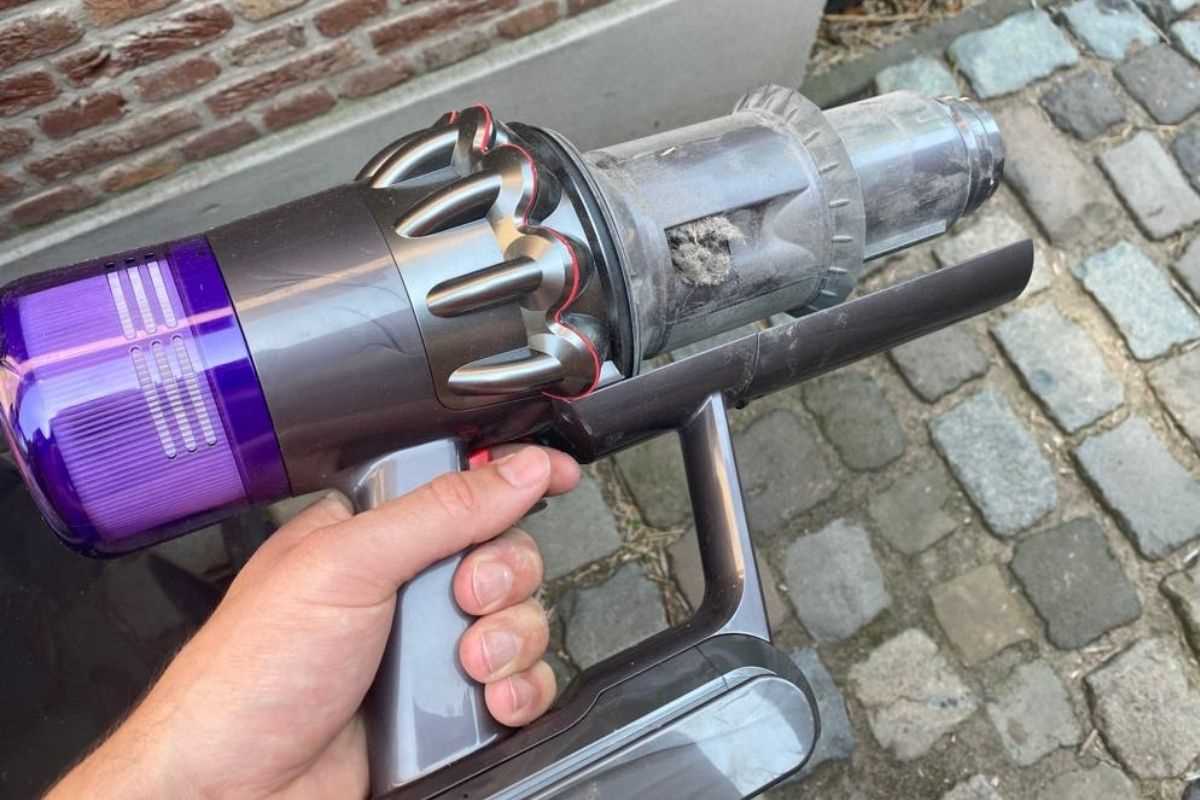
One of the most common reasons for reduced suction power in a Dyson vacuum cleaner is dirty or clogged filters. Over time, the filters can become filled with dust, dirt, and debris, which restricts airflow and reduces suction. To improve suction power, it is recommended to regularly clean or replace the filters.
Clear Blockages
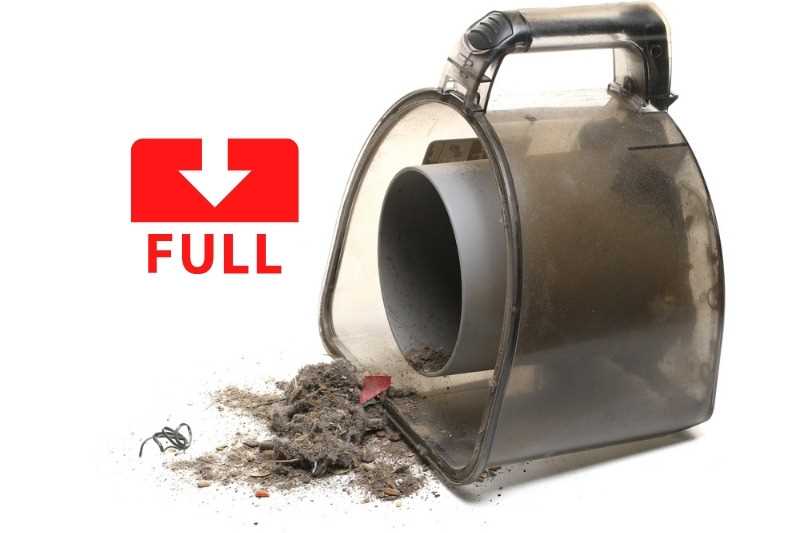
Another common cause of reduced suction power is blockages in the vacuum cleaner’s airflow pathway. Blockages can occur in the hose, wand, or brush bar, preventing air from flowing freely through the machine. To improve suction power, carefully inspect and remove any blockages using a cleaning tool or by disconnecting the affected parts and manually clearing the obstruction.
Check and Empty the Dustbin
If the dustbin is full or almost full, it can affect the suction power of the vacuum cleaner. Check the dustbin and empty it if necessary. A full dustbin can impede airflow, causing a decrease in suction power.
Inspect and Clean the Brush Bar
The brush bar, also known as the beater bar, can become tangled with hair, string, or debris, which can cause it to stop spinning or reduce its effectiveness. Inspect the brush bar and clean it by removing any tangled hair or debris. This will help the brush bar rotate freely, allowing it to pick up dirt more effectively and improve suction power.
Ensure Proper Attachment of Accessories
Make sure that all accessories, such as the wand, tools, or attachments, are properly and securely attached to the vacuum cleaner. Improperly attached accessories can cause air leaks, resulting in a decrease in suction power. Check the attachment points and reattach any accessories if necessary.
Replace Worn or Damaged Parts

If the above solutions do not improve the suction power, it may be necessary to replace worn or damaged parts. Check for any worn or damaged hoses, seals, or gaskets and replace them as needed. These parts play a crucial role in maintaining optimum suction power.
Regular Maintenance
To ensure optimal suction power, it is important to perform regular maintenance on the vacuum cleaner. This includes cleaning the vacuum’s brush bars, clearing blockages, emptying the dustbin, and replacing filters as needed. Regular maintenance will help prevent suction power issues and keep the vacuum cleaner functioning at its best.
Cleaning Filters and Brushes
Regularly cleaning the filters and brushes of your Dyson vacuum cleaner is crucial to maintain its performance and prevent it from losing suction. Here are some important tips to help you clean your filters and brushes effectively:
1. Cleaning the filters
- Preparation: Before you start cleaning the filters, make sure to unplug the vacuum cleaner from the power source.
- Removing the filters: Depending on the model of your Dyson vacuum cleaner, locate and remove the filters. Refer to the user manual for specific instructions.
- Rinsing the filters: Rinse the filters under cold water until the water runs clear. Do not use any cleaning agents or detergents as they can damage the filters.
- Drying the filters: After rinsing, gently squeeze out the excess water from the filters. Leave the filters to dry completely for at least 24 hours. Ensure they are completely dry before reinstalling them in the vacuum cleaner.
2. Cleaning the brushes
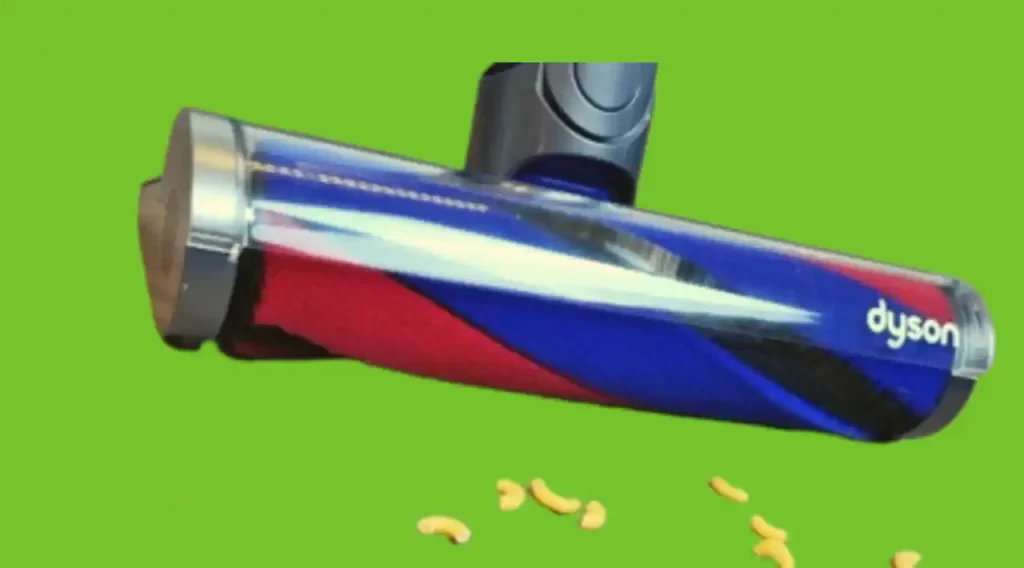
- Removing the brush head: Most Dyson vacuum cleaners have a release button or mechanism that allows you to remove the brush head. Press the button or use the release mechanism to detach the brush head.
- Removing debris: Use a pair of scissors or tweezers to carefully remove any hair, fibers, or debris tangled around the brush bristles.
- Cleaning the brush bristles: Mix warm water with a small amount of mild detergent and dip the brush bristles into the soapy solution. Gently scrub the bristles using your hands or a soft brush. Rinse the bristles thoroughly with clean water.
- Drying the brush head: After cleaning, use a clean cloth or towel to wipe off any excess water from the brush head. Leave it to air dry completely before reattaching it to the vacuum cleaner.
Note: It is recommended to clean the filters and brushes of your Dyson vacuum cleaner at least once every three months, or more frequently if needed. Proper maintenance will ensure that your vacuum cleaner continues to provide optimal performance.
Emptying the Dust Canister
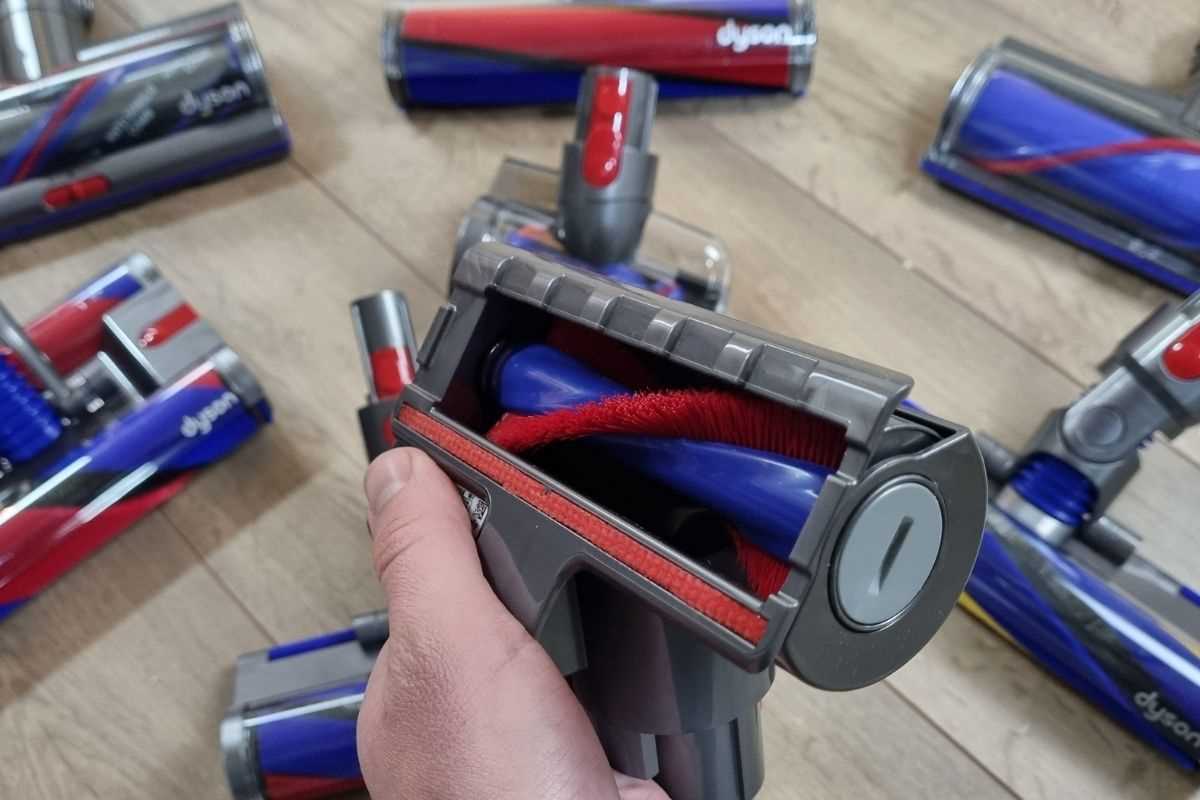
One of the most common reasons for a Dyson vacuum cleaner not sucking properly is a full dust canister. When the dust canister is filled with dirt and debris, it can restrict the airflow and reduce the suction power of the vacuum. Therefore, regular emptying of the dust canister is essential for optimal performance.
Steps to Empty the Dust Canister:
- Turn off the vacuum cleaner and unplug it from the power source for safety.
- Locate the dust canister, which is usually located near the handle or on the main body of the vacuum.
- Press the release button or lever to remove the dust canister from the vacuum.
- Hold the dust canister over a trash bin or bag, ensuring the opening is facing downwards.
- Press the release button or lever on the dust canister to open the bottom and release the dirt and debris.
- Shake the dust canister gently to remove any stuck debris.
- Use a damp cloth to wipe the inside and outside of the dust canister to remove any remaining dirt or residue.
- Carefully close the bottom of the dust canister and ensure it is securely locked.
- Reattach the dust canister to the vacuum by inserting it into the designated slot and pushing it until it clicks into place.
- Plug in the vacuum cleaner and turn it on to resume cleaning.
By regularly emptying the dust canister, you can maintain the suction power of your Dyson vacuum cleaner and ensure it works efficiently.
FAQ
Why is my Dyson not sucking up dirt?
There could be several reasons why your Dyson is not sucking up dirt. The most common cause is a clogged filter or blockage in the vacuum’s tubing. Check the filter and remove any dirt or debris that may be blocking the airflow. Another possible cause could be a problem with the vacuum’s motor or suction power, in which case you may need to contact Dyson for repair or replacement.
What should I do if my Dyson is not picking up pet hair effectively?
If your Dyson is not picking up pet hair effectively, there are a few things you can try. First, make sure that the brush bar is clean and free of any tangled hair or debris. You can remove the brush bar and use scissors to cut away any hair that may be wrapped around it. Additionally, check the vacuum’s filters and empty the bin to ensure proper suction. If none of these measures help, you may need to consider a vacuum specifically designed for pet hair.
Why is my Dyson losing suction power?
There are a few possible reasons why your Dyson may be losing suction power. One common cause is a clogged filter or blockage in the vacuum’s tubing. Make sure to clean or replace the filters regularly and check for any obstructions in the tubing. Another possible cause could be a problem with the vacuum’s motor or brush bar. If you’ve tried cleaning the filters and removing any blockages but are still experiencing a loss of suction, it may be necessary to contact Dyson for further assistance.
How can I fix a Dyson that won’t turn on?
If your Dyson won’t turn on, there are a few steps you can take to try and fix the issue. First, check that the vacuum is properly plugged into a functioning power outlet. If it is, try unplugging the vacuum and plugging it back in to ensure a secure connection. You should also check the power switch and make sure it is in the “on” position. If none of these steps work, there may be a problem with the vacuum’s power cord or motor, in which case it would be best to contact Dyson for repair or replacement.
Why is my Dyson making a loud noise?
If your Dyson is making a loud noise, there are a few possible reasons for this. One common cause could be a blockage in the vacuum’s tubing or brush bar, which is causing the motor to work harder and produce more noise. Check for any blockages and remove them if necessary. Another possible cause could be a problem with the vacuum’s motor or brush bar itself, in which case it may be necessary to contact Dyson for repair or replacement. It’s also worth noting that some Dyson models naturally produce more noise than others.
How often should I clean the filters on my Dyson?
You should clean the filters on your Dyson regularly to maintain optimal performance. The frequency will depend on how often you use the vacuum and the type of debris you are picking up. As a general guideline, it is recommended to clean the filters at least once every 1-3 months. However, if you are using the vacuum frequently or picking up large amounts of dirt and debris, you may need to clean the filters more often. Refer to your Dyson manual for specific instructions on how to clean the filters for your model.
Can I use my Dyson vacuum on hardwood floors?
Yes, you can use a Dyson vacuum on hardwood floors. In fact, many Dyson models are specifically designed to work well on different types of hard flooring, including hardwood. The brush bar on the vacuum can be turned off to prevent scratching or damaging the floor surface. Additionally, Dyson offers a range of accessories and attachments that can further enhance the cleaning performance on hardwood floors, such as the soft dusting brush or the hard floor tool.











